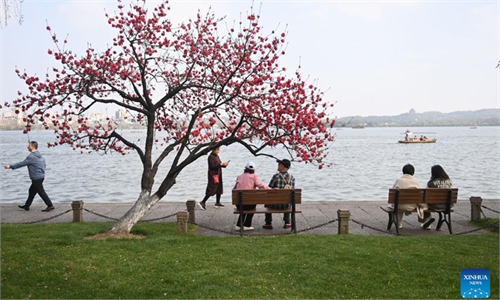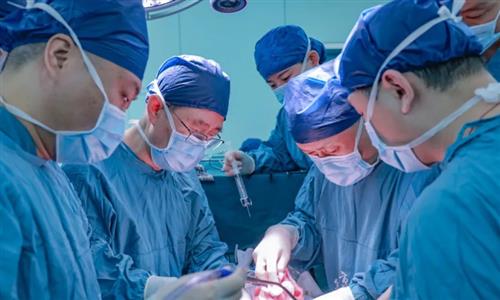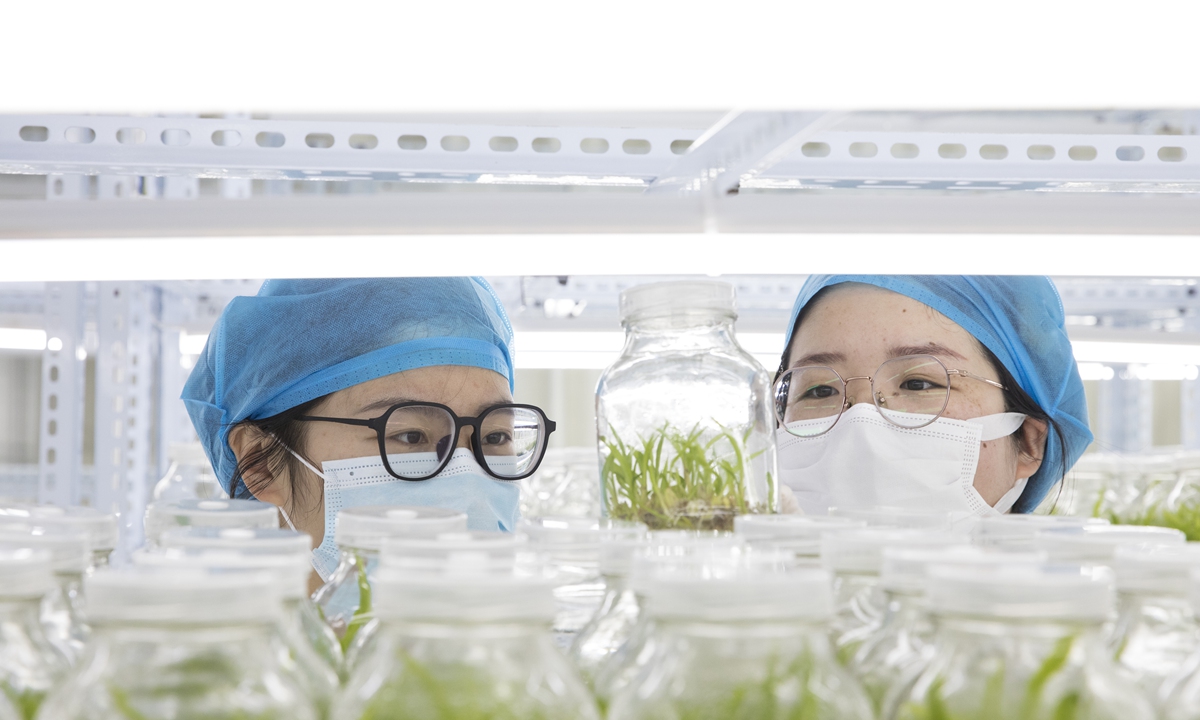
Workers inspect tissue-cultured saplings at the Chinese Academy of Agricultural Sciences Donghai Agricultural Comprehensive Experimental Station in Donghai county, Lianyungang, East China's Jiangsu Province, on February 29, 2024.Photo: VCG
A Chinese proverb says, "The plan for a year lies in spring."
Looking across the fertile countryside, regions everywhere are seizing on the agricultural season to carry out spring farming. With the advancement of science and technology, more and more new technologies are being applied in agricultural production, unveiling a scene of modern agricultural development across the vast fields of China.
With the Qingming Festival, also known as "Tomb-Sweeping Festival," approaching, West Lake Longjing, known as one of China's best green teas, has entered the large-scale picking period. In the tea gardens in Hangzhou, East China's Zhejiang Province, tea farmers are busy picking, sorting, and collecting fresh tea leaves.
Alongside these tea farmers, three "iron tea-picking workers" work diligently. Their hands are flexible robotic arms and their eyes are movable cameras, while their heads are "hats" made of solar panels. These three "workers" are intelligent tea-picking robots created by the agricultural robotics and equipment innovation team at Zhejiang Sci-Tech University.
This year, the robots have been upgraded to the 6th generation. Through continuous research and testing of technology such as artificial intelligence deep learning, depth camera positioning, and robotic arms, the new generation of robots has improved efficiency while reducing operating costs, the Zhejiang News reported.
The sixth-generation intelligent tea-picking robot has improved its work efficiency by 50 percent compared to the fifth generation. Capable of picking 0.75 kilograms of dry tea per day, it is estimated that one machine can replace 1.5 human labors, reducing costs by one-fourth.
However, compared to manual labor, a gap still exists when it comes to quality, meaning there is a long way to go before tea-picking robots can be widely promoted and popularized.
The application of BeiDou intelligent agricultural machinery is a strong guarantee for stabilizing and increasing grain production across the country.
To date, more than 2 million agricultural machines with BeiDou positioning operation terminals have been installed nationwide, including more than 150,000 plant protection drones, according to Science and Technology Daily.
"Installing the navigation system on agricultural machinery not only saves manpower but also land. Our work as drivers has become much easier than before, and the land plowed is straighter than the crooked planting before," said a farmer using the system in Bole city, Northwest China's Xinjiang Uygur Autonomous Region.
Currently, cotton planting in Xinjiang region has entered the preparation stage, so machinery operators are busy testing and maintaining equipment, and attending technical training to get ready for sowing.
Next to the Three Gorges Reservoir in Central China's Hubei Province, drones are working with humans to transport sweet navel oranges out of the mountains.
In Zigui county, Yichang city of Hubei Province, a method combining farmer-raised funds and government subsidies was adopted to build more than 1,700 orchard rail transport machines with a total length of 356,000 meters, help fruit farmers purchase more than 200 agricultural drones and provide free training to over 500 operators.
The widespread promotion of agricultural machines has vigorously driven the development of the navel orange industry.
Meanwhile, agricultural departments and scientific research institutes across the country are actively organizing agricultural technology experts to go into the fields and villages to provide point-to-point, face-to-face technical services.
For example, the Fujian Provincial Department of Agriculture and Rural Affairs in East China dispatched a group of agricultural experts to combine online and offline methods and go into villages, enterprises, and households to carry out agricultural technology services.
Smart agriculture has become a major highlight of this spring's management and spring planting. New technology such as big data and the Internet of Things are deeply integrated with agricultural production, and information technology is widely used in all aspects of cultivation, management, and harvesting, with the digitalization rate of large-scale planting reaching 26.4 percent, according to People's Daily.
Digital and intelligent technology also plays a significant role in agricultural disaster prevention and mitigation.
China's vast territory, continental monsoon climate, complex geographical environment and climate conditions, along with diverse planting and breeding types, lead to the frequent occurrence of a variety of agricultural disasters that have a wide range of impact.
To this end, various regions are actively improving crop disaster information systems, carrying out digital and intelligent disaster monitoring station construction pilot projects, strengthening consultation with meteorological, emergency management, and water conservancy departments, and enhancing disaster early warning and prediction capabilities.
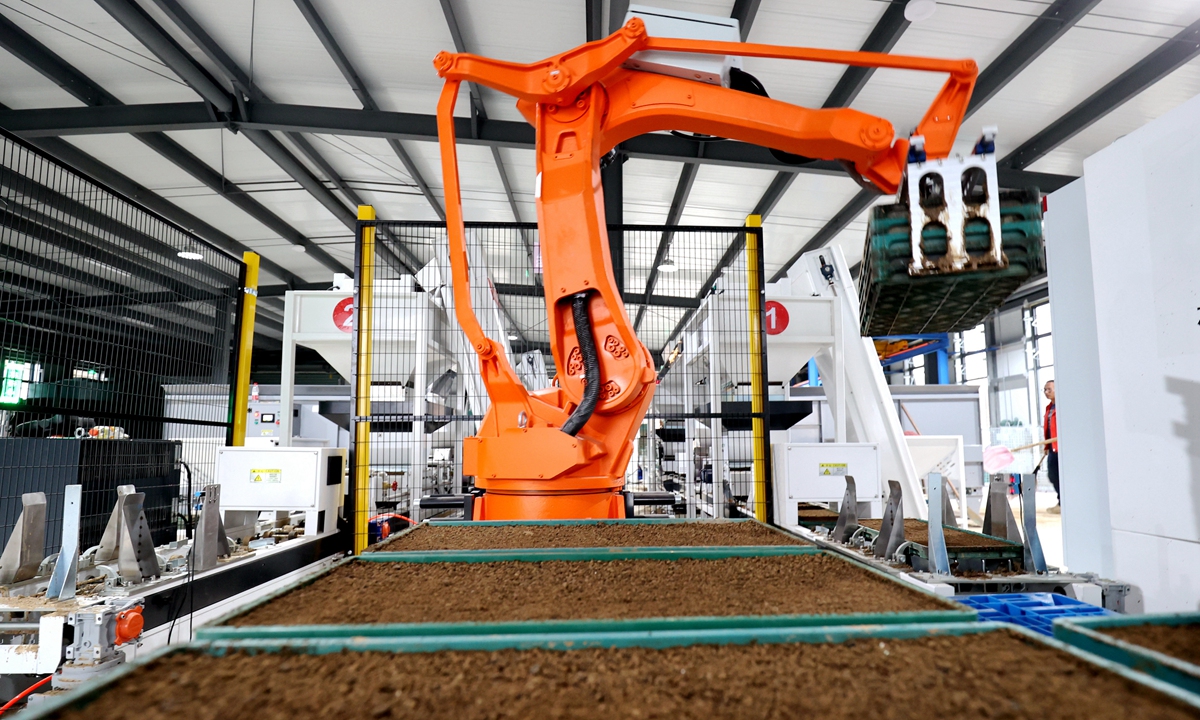
Robots transport seedling trays inside the Xianfeng Agriculture Intelligent Seedling Factory in Luoshe town, Deqing county, Huzhou, East China's Zhejiang Province, on March 25, 2024. Photo: VCG
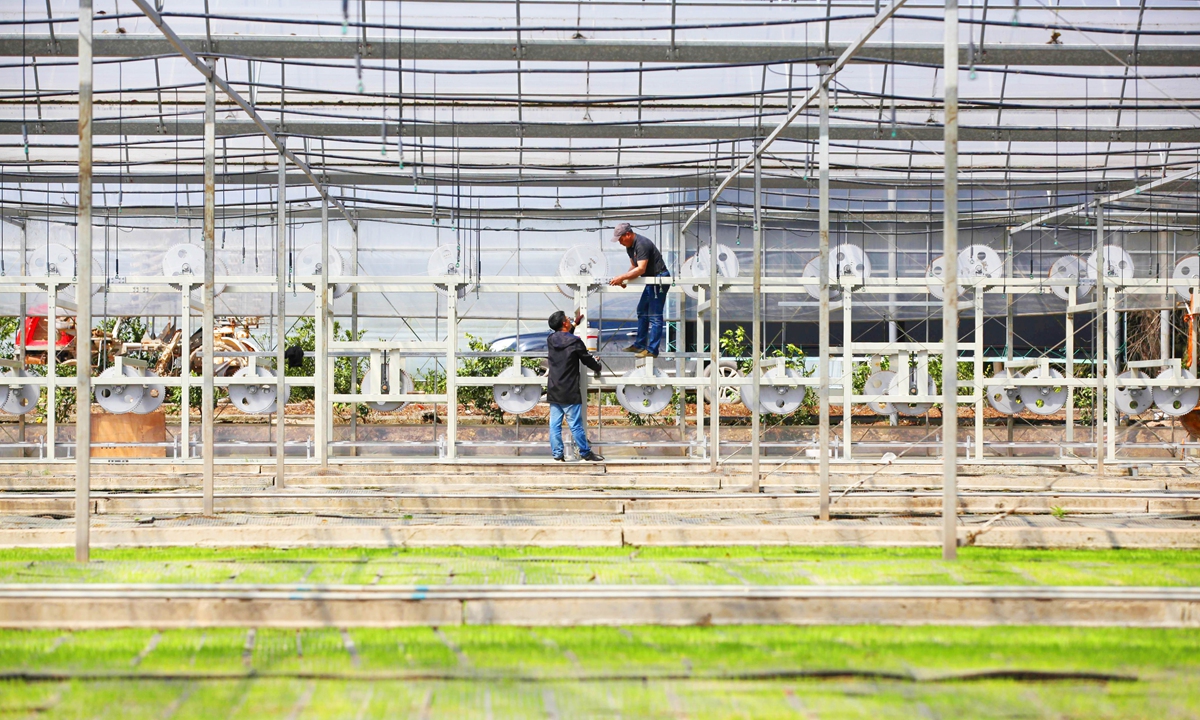
Technicians install a three-dimensional circulating motion seedling bed at the Guocong Seedling Supply Service Center in Wenling city, Taizhou, East China's Zhejiang Province, on March 26, 2024. Photo: VCG
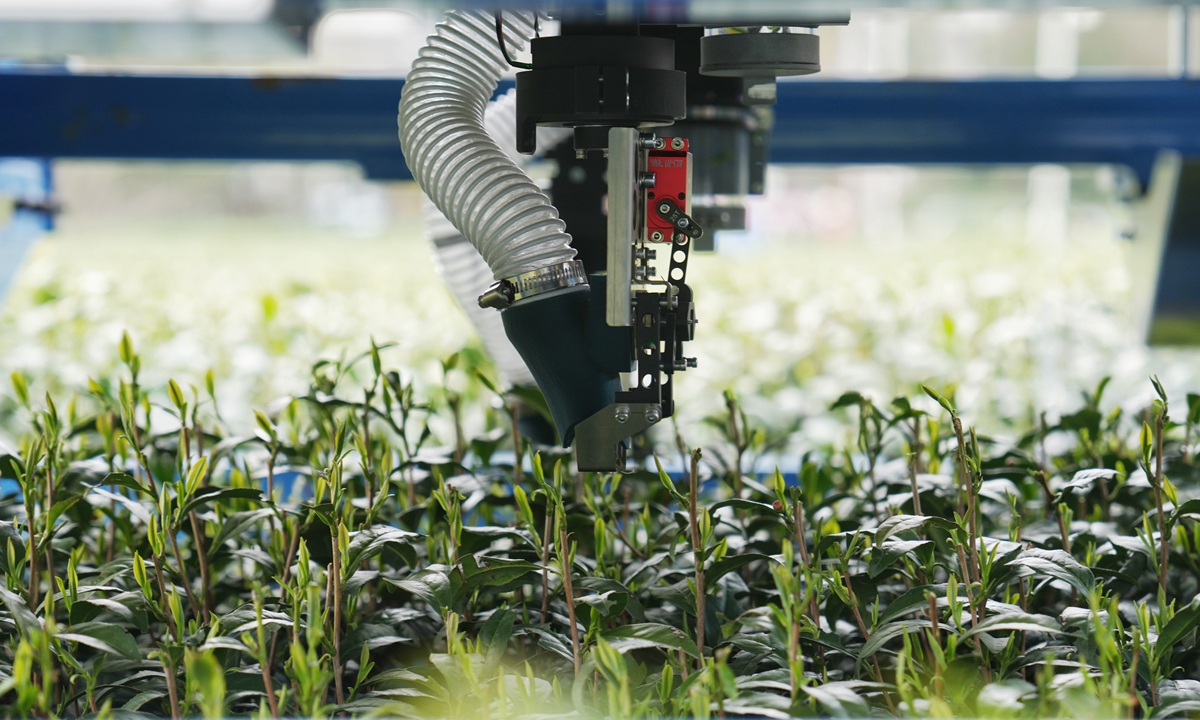
Right: AI-equipped intelligent tea picking robots developed by Zhejiang Sci-Tech University begin harvesting early spring Longjing tea in the tea garden in Hangzhou, East China's Zhejiang Province, on March 26, 2024. Photo: VCG
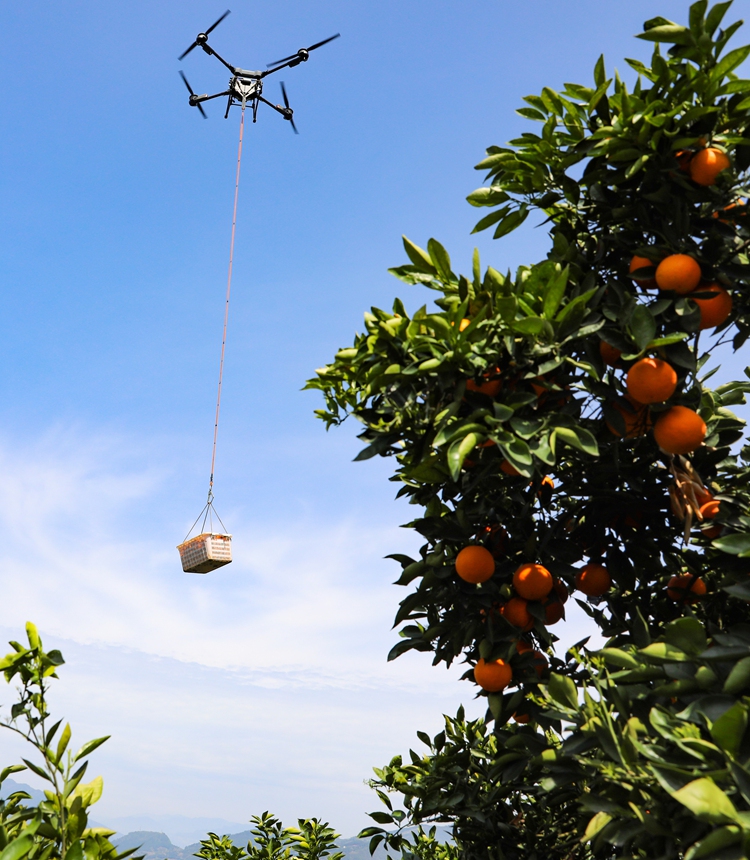
A drone transports navel oranges in the navel orange orchard of Dengjiapo village, Zigui county, Yichang, Central China's Hubei Province, on March 26, 2024. Photo: VCG
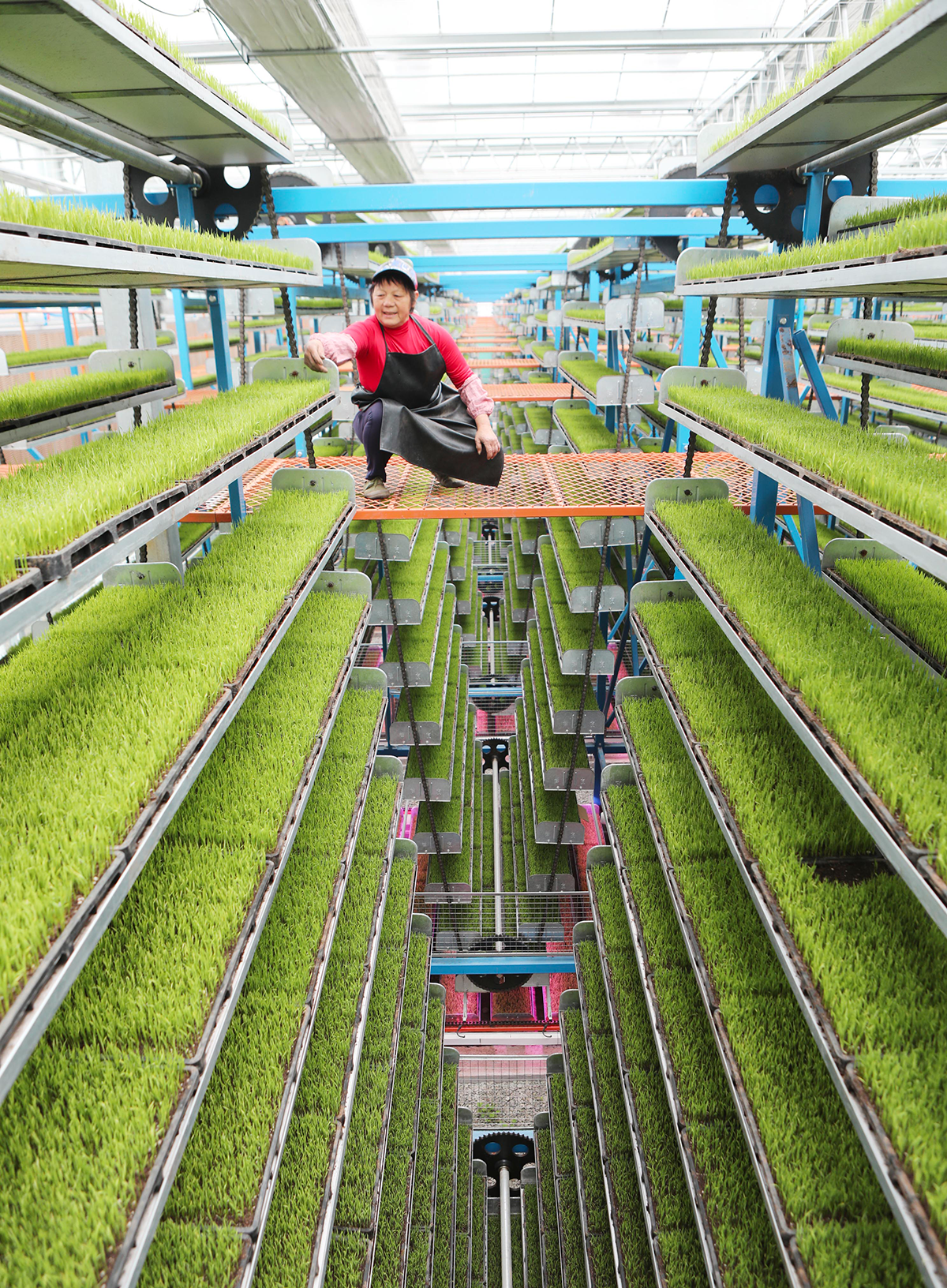
A worker check the growth of seedlings at the intelligent seedling cultivation base in Shuangxing village, Xianlong town, Yongchuan district, Southwest China's Chongqing Municipality, on March 14, 2024. Photo: VCG
